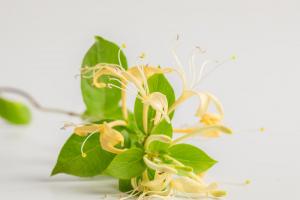Introduction
Planting apple trees in your garden can be a great way to enhance the beauty of your outdoor space while also providing a source of fresh, organic fruit. However, in order to ensure a healthy apple tree with optimal fruit production, it's important to carefully consider where you plant them. Here's what you need to know about where to plant apple trees in your garden.
Consider The Climate
The climate of your region will significantly affect the performance of your apple tree. Most varieties of apple trees are adapted to a specific range of climates, so it's vital to select a species that will thrive in your area. For example, if you live in a warm climate, you'll need to choose a species that can tolerate hot, dry summer temperatures. Similarly, if you live in a cold region, you'll need to choose a species that can survive harsh winter conditions.
Soil Type
An apple tree needs well-drained soil with a pH of around 6.0 to 7.0. Before planting, it's important to test the pH levels of your soil to confirm that it's suitable for apple trees. In general, apple trees prefer loamy, well-drained soils that are rich in organic matter. Avoid planting in areas with heavy clay or rocky soil as these conditions can stunt the growth of your apple tree.
Sun Exposure
Apple trees require a minimum of six hours of direct sunlight daily to grow and produce fruit. Therefore, you should avoid planting apple trees in areas where they'll be shaded by larger trees or buildings. Instead, look for a location that receives full sun exposure throughout the day.
Space Requirements
Apple trees require adequate space to grow and produce fruit. The size of your garden will determine the number of trees you can plant and the spacing between them. Dwarf and semi-dwarf apple trees can be planted closer together while full-sized trees require more space. It's important to note that the roots of your apple tree grow as wide as the canopy, so you should avoid planting too close to buildings, sidewalks, or other structures.
Pest Control
Apple trees are susceptible to a variety of pests and diseases that can damage or kill your tree. When selecting a location for your apple tree, consider the potential threats in your area and take steps to prevent infestations. There are many organic pest control solutions available, so research to find the most suitable and effective methods for your region.
Conclusion
By carefully selecting the location in your garden to plant your apple tree, you will set up the conditions for optimal growth and productivity of the tree. Aspects such as climate, soil type, sunlight, space, and pest control should all be considered to ensure a long and healthy life of your tree. Follow these guidelines and enjoy delicious and fresh apple from your garden.

 how many times do yo...
how many times do yo... how many planted tre...
how many planted tre... how many pine trees ...
how many pine trees ... how many pecan trees...
how many pecan trees... how many plants comp...
how many plants comp... how many plants can ...
how many plants can ... how many plants and ...
how many plants and ... how many pepper plan...
how many pepper plan...
































